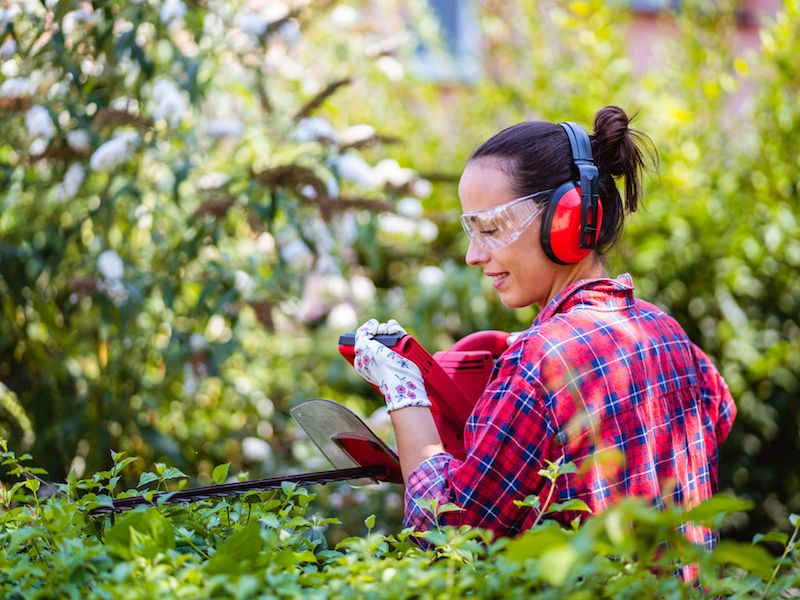
Protecting your hearing is a lot like eating right. It’s hard to know where to start even though it sounds like a smart idea. This is particularly true if you don’t consider your daily environment to be especially noisy and there aren’t any apparent risks to your ears. But day-to-day life can put stress on your ears and your senses, so your auditory acuity can be preserved if you practice these tips.
The more you can do to delay the deterioration of your hearing, the longer you’ll be able to enjoy the sounds around you.
Tip 1: Ear Protection You Can Wear
Using hearing protection is the most practical and basic way to safeguard your ears. This means that diminishing loud and damaging sound is a basic step you should take.
For most people, this will mean wearing hearing protection when it’s warranted. Two general forms of protection are available:
- Ear Muffs, which are placed over the ears.
- Ear Plugs, which are placed in the ear canal.
Neither form of hearing protection is inherently better than the other. Each style has its advantages. What’s significant is that you pick some hearing protection that you feel comfortable with.
Tip 2: When Sound Gets Harmful, be Aware of It
But how can you be sure when to wear hearing protection? Noise that is painful is normally regarded as harmful. But much lower levels of sound can damage your ears than you might believe. After just a couple hours, for example, the sounds of traffic are enough to damage your hearing. A vital step in protecting your hearing, then, is knowing when sound becomes harmful.
Generally sounds become harmful at the following thresholds:
- 95-100 dB: This is about the noise level you’d get from farm equipment or the typical volume of your earbuds. This level of noise becomes damaging after 15-20 minutes.
- 85 decibels (dB): After around two hours this volume of sound is hazardous. Your hairdryer or a busy city street are both scenarios where you will find this level of sound.
- Over 100 dB: In this situation, you can damage your hearing very quickly. Anything above this limit can injure your hearing in minutes or seconds. For instance, rock concerts and jet engines will damage your ears in 30 seconds.
Tip 3: Your Phone Can Be a Sound Meter
Now that we have a basic understanding of what levels of sound may be hazardous, we can take some precautions to ensure we limit our exposure. But in everyday life, it can be tricky trying to gauge what is too loud and what isn’t.
Your smartphone can now be used as a handy little tool. There are dozens of apps for iPhone, Android, and everything in between that turn your device’s microphone into a sound meter.
Having a live sound meter with you will help you measure everything you’re hearing in decibels, so you’ll have a much better idea of what hazardous levels really sound like in your everyday life.
Tip 4: Be Mindful of Your Volume Buttons
A smartphone with earbuds is usually the way people listen to music these days. This creates a risky situation for your hearing. Over time, earbuds set to a sufficiently high volume can cause considerable damage to your ears.
That’s why safeguarding your hearing means keeping a sharp eye on your volume management. In order to drown out noises elsewhere, you should never raise the volume. in order to make certain that volume doesn’t get too high, we recommend using volume configurations or app settings.
If your hearing begins to wane, earbuds can become a negative feedback loop; in order to make up for your faltering hearing, you may find yourself constantly rising the volume of your earbuds, doing more damage to your ears in the process.
Tip 5: Get Your Hearing Tested
You may think of a hearing test as something you schedule when your hearing has already begun to diminish. The difficulty is that it’s not always easy to detect a problem in your ears without a baseline to compare results to.
Creating data that can be used for both diagnostic applications and for treatment can best be achieved by scheduling a hearing exam and screening. This will give you some extra perspective for future hearing choices and ear protection.
Keep an Eye on Your Ears
In an ideal world, protecting your ears would be something you could do constantly without any problem. But there are always going to be difficulties. So whenever you can and as often as possible, safeguard your ears. Also, get routine hearing examinations. Hopefully, these tips will help you get a good start.